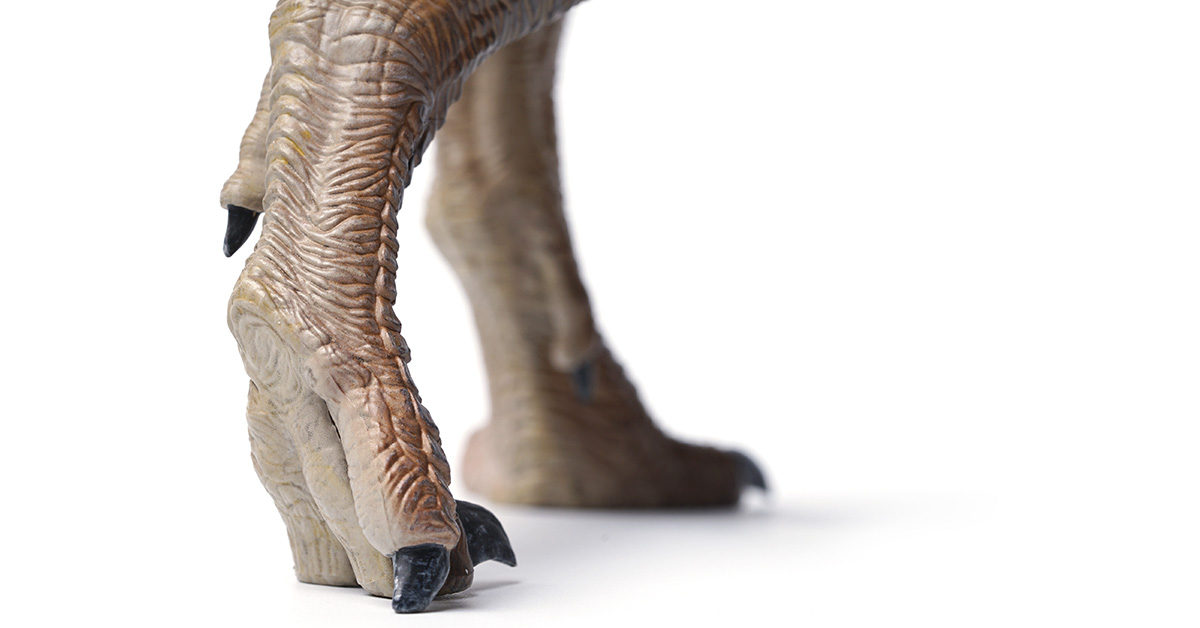This story is originally from 2016
Were you a dinosaur lover growing up? Perhaps you still are, with a real-life Jurassic Park (perhaps without the tragic part) is a secret dream of yours. If so, you’re in luck – sort of. Scientists have figured out how to do “reverse evolution” with birds, the descendants of dinosaurs. In fact, in 2016, they were able to grow chicken embryos with dinosaur legs.
Scientists Grew Dinosaur Legs On Chicken Embryos
The dinosaurs went extinct a long, long time ago – sixty-six million years ago, to be exact. This happened when an asteroid hit the Earth, whose impact caused many changes on the planet which led to their rapid extinction. Not all was lost, however, as some dinosaurs survived and evolved to adjust to the changes. These dinosaurs became today’s birds. Exactly how those anatomical changes happened, however, scientists are still trying to figure it out. (1)
In order to better understand what happened in order for dinosaurs to turn into birds, scientists have now several times employed a kind of “reverse evolution”. In 2015, this meant genetically modifying chicken embryos so that they would grow a dinosaur-like snout. In 2016, they were able to do the same thing but this time, the embryos grew dinosaur legs. (2)
The reason for all of this is to help scientists understand how dinosaur skeletons developed and, as already mentioned, how they evolved into birds. This will help us understand more about these prehistoric creatures and therefore more about our own planet.
Read: Massive turtle surfaces in Mississippi River, social media goes wild
Why Birds?
The dinosaurs that evolved into birds will surprise you, as these animals could not fly. They did, however, have feathers. They were the group of dinosaurs that were called the Coelurosauria, which included the Deinonychus, Tyrannosaurus, and Velociraptor. The most famous dinosaur that was part of the transition from dinosaurs to today’s birds was the Archaeopteryx. These looked remarkably similar to birds, but with long, sturdy legs. These legs were possible because they had a tube-shaped bone, the fibula, that went all the way down to their ankle. (3)
This fibula is one of the most prominent changes that occurred over time in the transition. The fibula in today’s birds doesn’t reach down to the ankle. A research team from the University of Chile began studying the genetics of a chicken. What they found is that if they inhibit a specific gene, the IHH gene, the fibula continues to grow. This meant that they were able to grow chicken embryos that had dinosaur-like legs.
With an inactivated IHH gene, another gene, called PthrP, which is related to bone growth, is much more active. This gene allowed the fibula to continue to grow, all the way down until it attached to the embryonic birds’ ankles. Once they achieved this, they noted that the new skeleton was extremely similar to that of the Archaeopteryx. These chickens were not allowed to hatch, as the scientists were not looking to create creatures for any other reason than for scientific advancement.
Could We Grow More Dinosaurs?
Of course, this has everyone wondering if making a real-life Jurassic Park is an actual possibility. Scientists have reassured us that we are nowhere close to that in terms of science. Beyond that, there are ethical considerations to make. These kinds of discoveries and experiments do, however, help us to better understand the early days of our planet.
In order to actually build a dinosaur, we would need to first have DNA to use to create it. This, naturally, is the hardest part, as dinosaurs went extinct millions of years ago. Though scientists are discovering more and more fossils every year, it is not possible to extract DNA from them, as the organic matter that houses it is long gone. This is because dinosaur skeletons are not actually made of bone – they are made of rock sediment that filled in the bones’ places. (4)
Whether or not it is possible to truly clone a dinosaur is something that scientists are still trying to figure out. There have been claims here and there that dinosaur DNA has been found, but most scientists remain skeptical. They do not believe that DNA proteins can last for so many millions of years. This is why something like the reverse engineering of the chicken embryos makes a much more plausible option for potentially “growing” a dinosaur. Still, scientists say don’t hold your breath – it could be a long time before that ever becomes possible.
Read: Perfectly kept dinosaur embryo from 66 million years ago found
Sources
- “Dinosaur Legs Grown On Genetically Modified Chicken Embryos In World First.” IFL Science. Robin Andrews. March 14, 2017.
- “Molecular development of fibular reduction in birds and its evolution from dinosaurs.” Wiley. João Francisco Botelho, et al. February 17, 2016.
- “Archaeopteryx’s Evolutionary Humiliation Continues.” National Geographic Carl Zimmer. July 31, 2013
- “Could we build a real-life Jurassic Park?” Live Science. May 14, 2021.

